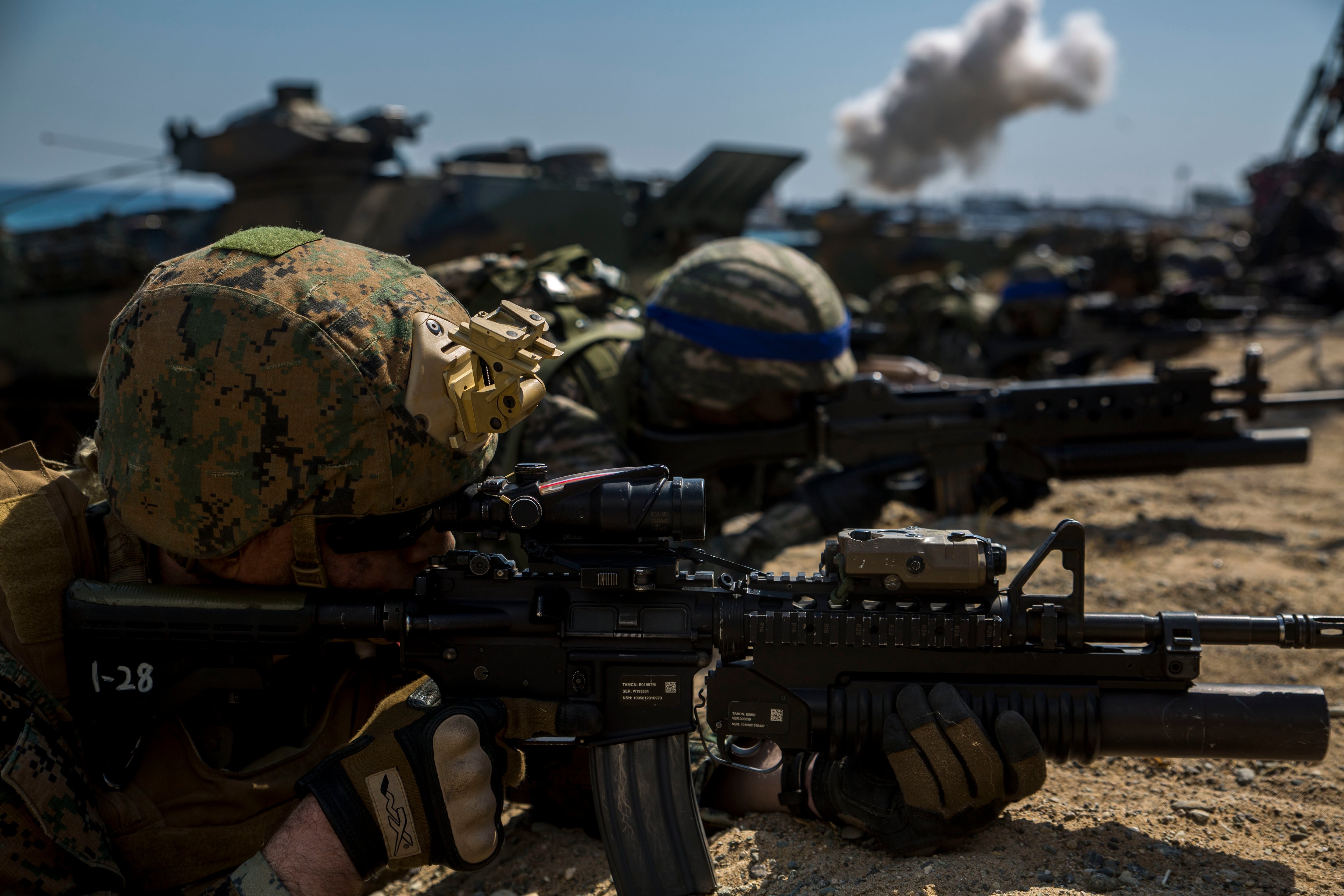The Marine Corps would "surge" to fight another war, even if Marines did not have all of the training and equipment they needed, the service's top general told lawmakers Wednesday.
"Bottom line is: We're going to go," said Marine Corps Commandant Gen. Robert Neller. Marines are going to go and we're going to provide the best, ready force that we can because that's what you expect from your Marine Corps."
Neller's comments come one day after the assistant Marine Corps commandant said he was worried about the service's ability to fight and win another war given readiness challenges that non-deployed units face.
Right now, the Marne Corps can provide trained and ready forces to combatant commanders, but the service would be hard pressed to rapidly respond to another major crisis,Neller said at Wednesday's House Armed Services Committee hearing.
"Our ability to meet other regional requirements for major contingency plans: We would be able to do that but we would probably not be able to do it within the time frame that the current plans call for us to arrive to participate in that conflict.
If the Marine Corps is called upon to surge, those Marines who had recently returned from deployments would be least prepared to go because they would be at the beginning of their training cycles, Neller said. For any surge, the Marine Corps would dip into the Reserves.
"To have the Reserves surge, obviously, we have to bring them on active duty; we have to mobilize them and they have to be paid," Neller said. "If we were to replace one of these capabilities with a Reserve battalion or a Reserve flying squadron, that's an expensive and that's where you get into the issue of using the Reserves as effectively as we probably could."
Years of deployments and the continuing fight against the Islamic State have taken their toll on Marine Corps equipment, especially aircraft, Neller said.
"The simple fact is that we don't have enough airplanes to meet the training requirements for entire force," he said.
Restoring readiness rates for Marine Corps aviation units to healthy levels will require buying new aircraft and repairing its older ones, Neller said.
"We got to get more airplanes on the ramp; pilots have to fly more; we've got to get our maintainers the parts they need to fix the airplanes," he said. "We have a plan. It's funded. But it's not going to happen overnight. It's going to take a couple years of this combination of effects."
Neller acknowledged that the Marine Corps is seeing an increase in aviation mishaps. Since October, the service has recorded four Class A aviation mishaps, which involve loss of life or damage that is greater than $2 million, and one Class B aviation mishap, which cause between $500,000 and $2 million in damage. During fiscal 2015, the Marine Corps experienced seven Class A and nine Class B mishaps.
The latest Class A mishap occurred on March 8, when an AV-8B Harrier was severely damaged when it caught fire while getting ready to take off from the amphibious assault ship Kearsarge in the Persian Gulf.
Assistant Commandant Gen. John Paxton told lawmakers on Tuesday that the Marine Corps is looking into lower aviation readiness rates have led to an increase in fixed- and rotary-wing accidents.
"We are concerned about an increasing number of aircraft mishaps and accidents," Paxton said at Tuesday's Senate Armed Services Readiness Subcommittee hearing. "We're looking to see if there's a linear correlation. We know historically that if you don't have the money and you don't have the parts and you don't have the maintenance then you fly less."
Marine Corps aviation has been particularly hard hit by budget cuts, known as "sequestration," Paxton said.
"In the case of the Marine Corps, when we say 'fight tonight,' we have an equally high pride factor and ability factor to source fight tonight forces," he said. "We've had to already chip into that by saying, 'We're going to resource you and send it over, but you're not going to get quite as many aircraft in the next round of doing that.'"

Cpl. Nicholas Hill, a joint fire observer from Manchester, Tenn., provides security as the amphibious assault vehicles as part of Exercise Ssang Yong 16, March 12, 2016.
Photo Credit: Lance Cpl. Kelsey Dornfeld, III Marine Expeditionary Force /
As the Marine Corps has shrunk from its peak active-duty end strength of 202,000 to 182,000, the service has lost three infantry battalions, six artillery batteries, four tank companies and five amphibious assault vehicle companies, Paxton said.
"Though your Marine Corps remains able to meet the requirements of the defense strategy and to conduct high-end operations in a major contingency response, we may not be able to do so with the level of training and for all of our units and along the timelines that would minimize the costs in damaged equipment and in casualties."
To make sure it is ready to "fight tonight," the Marine Corps has had to cut into its bench of non-deployed units, nearly half of which don't have all of the personnel, equipment or training that they need, Paxton said.
"We have tonight forces which are ready, tomorrow night which is ready, and then everything else is at some degraded state of readiness, whether it's personnel, training, leadership, equipment," he said. "That is not only mortgaging the future, but that's mortgaging the surge capability to fight an operations plan against a known adversary where we're banking to have good indications and warning, adequate lift, and right time.
"So I worry about the capability and the capacity to win in a major fight somewhere else right now."









